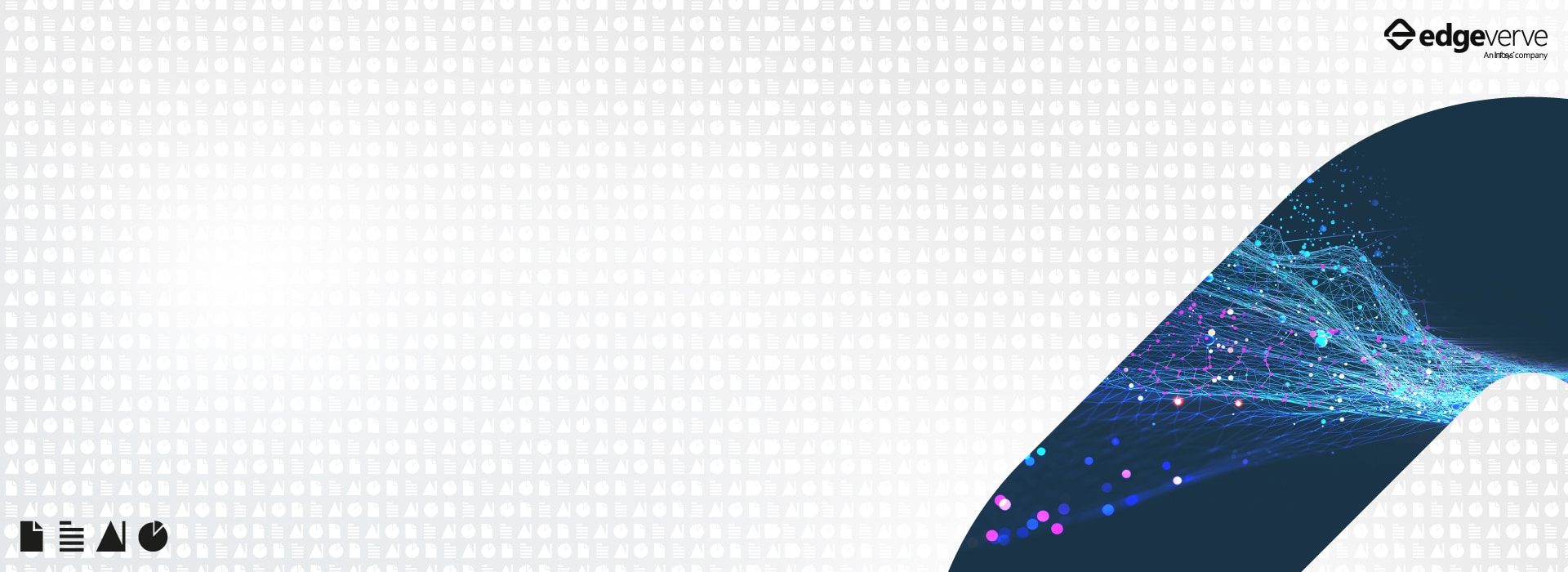Home > XtractEdge > Blogs > When AI and humans complement each other and produce the best business outcome
When AI and humans complement each other and produce the best business outcome

Perhaps one of the greatest draws towards the Artificial Intelligence and automation of the workplace is that software will never feel overwhelmed with enormous amounts of data, feel fatigued, or bored. By leveraging technology, process mining, contracts analysis; and data crunching that once needed an army of employees, days, months, perhaps years to complete can now be done in a fraction of the time. EdgeVerve’s XtractEdge Platform not only analyzes data, but it also curates the data analyzed to make it useful to your business, this consumable information will inform key decisions and ease the day-to-day workings of your business.
This enhancement of human experience leaves one question: where do we humans fit into all this? While AI technology can manage a vast amount of data, filter through and carefully analyze it, it is not immune to errors. In short, to obtain 100% accuracy a human must be present to supervise the operations of the software for the foreseeable future. Human participation in the workforce is a necessity as human input will deconstruct unstructured data.
Sentiment Analysis
Consider, for example, the field of politics. Dr Batista Navarro fed the speeches given by members of parliament into an AI-trained model. There was an enormous number of data to analyze in many ways, AI was essential. However, AI technology missed the often-ambiguous language used by politicians and could not understand the underlying political subtext. To navigate this minefield of words cloaked in party loyalty, vagueness, inconsistent voting patterns, and varying tonal differences, the algorithm needs human guidance.
An AI cannot fully interpret human communication the way humans do and cultural and linguistic conventions that vary from region and nationality only add extra layers of complexity. Furthermore, while it can say, identify the voting patterns of an MP, the AI may not draw meaning from change in the tone of voice, sarcasm or even pick up meaning from things like vocal affectations, it might be instinctual for us humans but nearly impossible for an AI. In a process as delicate as this, human intervention should not be an afterthought. They must be present from the start, analyzing the findings produced by the algorithm at several points, to catch errors, and to determine the purpose of the data, especially when it is quantitative.
What the Future Holds
The goal of introducing an AI-powered model in an environment is optimization. The jobs allocated to humans will change but never vanish entirely. AI in various environments seeks to offer consistency where humans simply can’t.
The onset of Fatigue: Humans can isolate key points of information for say, ten documents, perhaps another ten, however they would have reached their limit by the 32nd document brought in for analysis, and the whole process is prone to human error. XtractEdge Platform on the other hand understands text blocks, pieces together context and classifies a document with corresponding invoices, sales orders, and purchases. Furthermore, if the Doc AI cannot recognize a name, it will perform and examine a breadth of documents and data (full field value pairing) to obtain appropriate context and establish meaning, diminishing errors with no fatigue.
Climbing Cost: Paying already exhausted employees overtime to make sense of thousands of documents is a budgetary nightmare. Using AI to clear unstructured data for a fraction of the hours initially spent, is an efficient use of time and money. Every year, doctors, and the larger healthcare industry, lose 50% of their valuable time and growth to document processing. With XtractEdge Platform in place, they can have patient records at their fingertips and resources can be directed towards efforts to improve the patient experience.
Is Artificial Intelligence here to replace us?
The question has haunted job seekers, employers, scientists, and even the occasional science fiction author. A simple response to this preoccupation is that AI is not intended to ‘replace’ human intelligence. They provide much-needed scalability and productivity in industries that are overrun by data and require assistance. Tedious and time-consuming jobs will be given to the AI while tasks that require emotional intelligence will be assigned to humans.
Take for example the disastrous mistake made by large tech companies like Facebook and YouTube. their content moderation software has been on the receiving end of a lot of criticism because it filtered out videos that discussed controversial content, misidentified and demonetised videos entirely, threatening the livelihoods of many large and small creators, disrupted the media diet of many consumers just because the AI could not distinguish between upsetting content and culturally relevant post and videos.
This is also relevant in contracts analysis. While AI can help categorize, extract and analyze relevant data, it is the human quality of ‘emotional understanding and decision making’ that are rewarded and amplified as AI does the drier and more mundane tasks.
Dynamic socio-political nuances are simply beyond the comprehension of an algorithm, as it cannot be treated as just numbers and words. Humans who have a pulse on societal happenings prevent this. If the idea of a digital revolution in your work appeals to you, read more to learn about how EdgeVerve can optimize your business environment and bring you closer to your goals.

Possibilities Unlimited
Possibilities Unlimited
Inspiring enterprises with the power of digital platforms
More blogs from EdgeVerve →